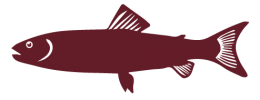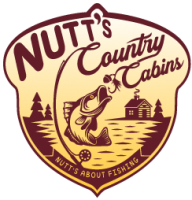Questions? Call 1-844-905-1001
Whitefish

The Lake Whitefish (Coregonus Clupeaformis) is sometimes referred to as “humpback” fish due to the small size of the head in relation to the length of the body. They go by varies names such as Otsego Bass, Sault Whitefish, Humpback Whitefish, Inland Whitefish and Whitefish. The Lake Whitefish is part of the Salmonidae family and are a freshwater fish found in North America, mostly in Canada and parts of northern United States.
Similar in appearance to other Whitefish within the Salmonidae family, they have an adipose fin. The Lake Whitefish has a snout which overhangs the short lower jaw, so that the mouth opens in a slightly inferior position. The Lake Whitefish has the presence of two small flaps in each nostril with a small posterior dorsal adipose fin. The coloration is typically silvery side to silvery to white belly with an olive to pale-green or brown dorsal hues. The ventral fins are white and the tail has a dark posterior edge. The tail fin of the Lake Whitefish is severely forked, making it a fast swimmer.
Lake Whitefish typical weigh 2-4 pounds and from inland lakes can reach a weight upwards of 5 pounds. On average, the Lake Whitefish weighs only 4 pounds. They have a length of 12-26 inches (30-65 cm) but they can grow to 31 inches (79 cm) and commonly reach 20 inches (51 cm). According the IGFA World records the largest Lake Whitefish caught weighed 6.52 kgs (14 lbs 6 oz.) in Ontario, Canada on May 21, 1984, which is also Ontario’s record.
Lake Whitefish are found in many inland lakes. They prefer the deep sections of deep lakes and shallow sections of Far North Lakes. They move into rivers and streams to feed in the early spring and often found in deeper pools behind spawning beds. In early summer, they can be found on shallow offshore reefs or rocky points, feeding on small clams, insect larvae, leeches and small fish. In the summertime, they move to deeper cooled waters when the surface temperatures rise into the mid 60’s range staying below the thermocline much of the time. They return to the shoals of large lakes and rivers during the late fall and early winter when they spawn. Whitefish spawn from September through to January in waters 2 to 4 metres in depth during the night. In the autumn mature Lake Whitefish enter the shallows to lay their eggs on shoals or rubble and gravel. There is no parental care of the young. In the following spring the young will hatch. The Lake Whitefish’s natural predators include Lake Trout and Northern Pike.
Anywhere you can find a shallow shoal that transitions to a deeper ledge and flattens out to a hard bottom is a great spot for Whitefish. The top of the shoal might only be 20 to 30 feet deep, but it will produce the best bite early in the morning and remain consistent throughout the winter. Look for a hard bottom with a few rocks up on top. Whitefish will be all over this type of structure. Whitefish do most of their feeding at night, so it is popular to go night fishing for Whitefish. You can also go fishing right at dawn.
Enjoy hooking this fish in the months of June, July and early August. A simple line and jig system is enough to catch the fish as they feast on mayflies and midges. In winter months, catching Whitefish through the ice is very popular. Successful ice fishing techniques include using a jigging spoon, with at least one “slider hook” above and separated from the spoon with a barrel swivel and all hooks tipped with wax worms. Early winter just before sunrise is the best time to do some ice fishing for this fish. If you get out there by mid day drill holes down the sides of the structure, concentration on any flat ledges where the shoal merges with the basin.
When you’re ice fishing for Whitefish it’s important to drill holes in many different depths to locate the bigger schools of fish. It’s important to stay close to the shoal and drill holes in different depths to increase you’re your chances.
Angling tips for fishing Whitefish
Use a 6 to 7 foot long, medium action spinning rod and reel combination. Having a rod with a limber sensitive tip is key. Use a 6 – 10 pound test mono, with a small jigging spoon, and use a No. 6 hook as Whitefish have small delicate mouths. The key for bait here is to go small. Whitefish mainly eat from the bottom of lakes or rivers, so you want to place your bait where they will feed. Lower your jig setup to the bottom and jig it slowly about 6 inches to a foot off the bottom for greater success in catching one of these fish. Trolling spoons also are effective later in the season when whitefish suspend over deep water.
Lake Whitefish Opened all year round in Zone 4 and limits are set for 6 with a conservation fishing license and 12 with a sportsman fishing license. Please check fishing regulations on www.ontario.ca/fishing
Wind: 8mph SW
Humidity: 76%
Pressure: 29.76"Hg
UV index: 3
81°F / 61°F
72°F / 52°F
Nutt's Country Cabins, 2076 Highway 664, Sioux Lookout, ON P8T 0A7
Copyright © 2019 NuttsCountryCabins.com | Privacy Policy | Website design by: Little Dragon Media

